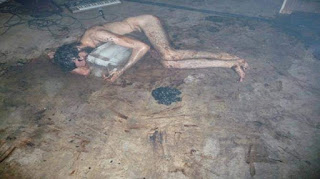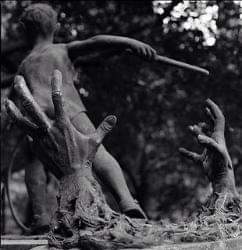History: Eastern Band helped thwart German intelligence during height of WWI
By Jim Buchanan
Twenty years ago, a film came out that made a brief splash before quickly being lost in a Hollywood summer dominated by franchise films (installments of the Spiderman, Harry Potter, Men in Black, Star Wars and Lord of the Rings series all landed that year).
The film was called “Windtalkers,” and it was based on the real-life saga of Navajo code talkers in World War II’s Pacific Theatre. Navajo language was the basis of an unbreakable code Japanese intelligence could never crack, making communications between native Navajo speakers regarding military movements and dispositions safe and invaluable to the American war effort.
The movie was something of a flop not because of the story but because of how it was told. At the time critic Roger Ebert said “filmmakers have buried it beneath battlefield cliches, while centering the story on a white character played by Nicolas Cage,” despite being based on “a fascinating, little-known story (that) might have made a good movie.”
The movie wasn’t a big hit, but it did help spread a fascinating and heroic tale around a bit in the American consciousness.
But the story goes back further, as the Navajo weren’t the first code talkers.
In World War I, an American officer serving in France overhead two Choctaw soldiers speaking and, realizing he couldn’t understand what they were saying, made the logical leap that Germans wouldn’t be able to either.
As many Native American languages had never been committed to paper, there would be no way for the Germans to decode the language, the officer figured radio and telephone communications could be delivered safely by placing Choctaws to handle communications at the front and to the rear lines. It worked, despite obvious hurdles such as there (understandably) being no word for modern technologies such as “machine gun” in the native language.
The first combat test of Choctaw code talkers is recorded as taking place in late October of 1918.
There was another code talker experiment before that, however, and it involved members of the Eastern Band of Cherokee Indians serving in the military, in the 119th and 120th Infantry.
The United States WWI Centennial Commission notes “The earliest documented use of Native Americans as code talkers is the Eastern Band of Cherokee Indians from North Carolina. During the Somme Offensive (September 29 - November 11, 1918) a group of Eastern Band Cherokee began to use their native language on October 8 or 9, 1918 for military communications in the 105th Field Artillery Battalion, 30th Infantry Division.”
John Stanley, a 1st Lieutenant with 15 years as a telegraph operator, was among those who by early October of 1918 realized that Germans were intercepting messages in real time, effectively enough to direct shelling in real time at points on communication lines.
Stanley later wrote, “(I) pointed out to the Division Signal officer that the old 1st N.C. Regiment which was split up at Camp Sevier, S.C. in 1917 and its personnel assigned to the 119th and 120th Infantry Regiments contained quite a number of Cherokee Indians which were now somewhere in the division, and that in my opinion, if a number of the most intelligent of them were placed as each telephone, and that they transmit all messages in their native tongue, I felt sure that even a battalion commander could use them in transmitting commands in perfect safety.
The matter was taken up with the division commander, and the next day found every command post from brigade forward, including some company command posts, (with) a telephone with a Cherokee Indian beside it.
Needless to say, there were no further messages intercepted by the enemy that we heard of. From then on until October 12, 1918, at which date I was ordered back to the United States as an instructor, the Cherokees were kept on the job with continued success, and I understand were used until the end of the war.”
Evidently, records of named individuals from the EBCI were lost along the way, but they were successful in their code efforts and paved the way for the practice to continue.
Yes, it would have made a good movie. As Hollywood seems fond of recycling ideas, perhaps they’ll give it another go.
PHOTO CAPTION: Group photograph of Company I, 321st Infantry, 81st Division at Joue l’Abbe, France, in June 1919. A number of members of the Eastern Band of Cherokee Indians were in the company and served with distinction.
Other EBCI members are credited with being used as “code talkers,” employing native Cherokee in communications between Allied units, thwarting German success with intercepting telephone and telegraph messages in real time, playing havoc with efforts at the front.











Comments
Post a Comment